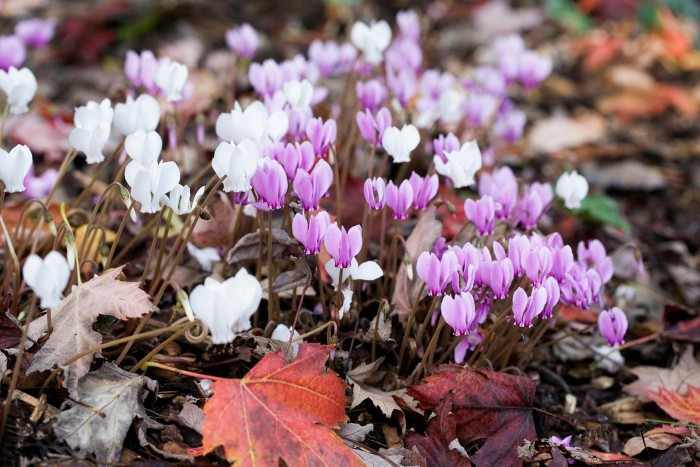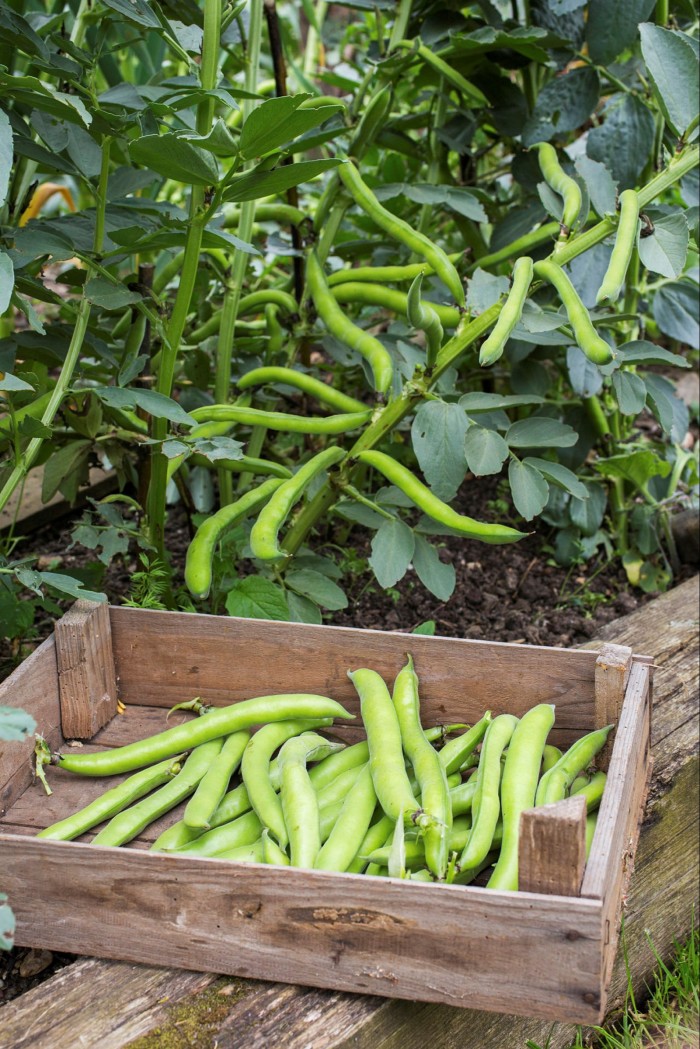Cyclamen, an autumn-flowering joy


Roula Khalaf, Editor of the FT, selects her favourite stories in this weekly newsletter.
I have just been finishing a basic job. Hardy autumn-flowering cyclamen are one of the joys of the season, making carpets of flowers and pretty leaves beneath tall trees anywhere from Devon to Turkey.
I never have enough of them and so I ordered a batch in August from a top supplier, opting for delivery by post. Delays ensued in these difficult weeks. When my cyclamen corms arrived, others were flowering in the garden. Never mind: they are as tough as nuts.
I recommend Cyclamen neapolitanum to every gardener, especially gardeners in sites whose gardens are shaded by tall trees. Unpacking the new arrivals, I was reminded of a frequently posed question: which way up should dry corms be planted? They look baffling.
The best answer is to look for the side that has traces of previous little stems, dried up and collapsed on its surface. That side should go uppermost. These cyclamen grow in amazingly dry places all over the Mediterranean, but in gardens they appreciate some rotted leaf mould, worked under and round them. The corms should go in with about an inch of soil on top.
While planting them, I thought about recent queries sent by readers who
are totally frank about their lack of knowledge. It is always worth revisiting basic uncertainties. Here are those sent by three readers who have come newly into gardening since lockdown.
Jasmine, renting a ground-floor flat in Islington, is refreshingly honest. On an excursion before moving to lockdown level two, she visited a garden centre and came away with a cushion that was overpriced and a packet of fudge that she ought to have resisted. Only a proportion of the stock in many garden centres, she well remarks, seems to relate to gardening.
When she goes back, what should she buy right now for the beds in her back garden? It does not have to be something she can take with her when she moves out, but it has to be something to flower before next June when her lease ends. It would be nice if it gave her a sense of achievement.

Right now, go for tulips. I recommend many of the low-growing ones which a good centre should have on show. If not, try jacquesamandintl.com and even go to their nursery shop up at Clamp Hill, Stanmore, Middlesex to collect or choose on site.
Among my favourites for a window box are the stripy little kaufmanniana tulips that will flower in late March, one of the best being Stresa, a gold yellow with a red streak on the outside, which shows up well from a distance.
I also like lemony-yellow Honky Tonk, about 6in high and elegantly matched to its leaves. All the scarlet red praestans tulips are excellent too. In boxes tall tulips flop around but these ones are tidy and low growing.
Be sure the box is filled with compost nearly to the brim. Plant the bulbs with a depth of about 3in of soil above their pointed tips, which must point uppermost. There will be no problem about leaving them behind. After flowering in a window box, these tulips are never so good again. Six to eight to a box suffice.
Next is Jonathan, who has moved out of morbid London and finds himself with a third of an acre of garden, nearly square. He has inherited some good dahlias, which have been magnificent cut flowers for the past six weeks. If or when it freezes, what will happen to them and what should he do?
Their stems will be blackened by the first frost and then he has two options. He can follow lazy modern fashion, cut them down to about an inch above the ground, pile some debris of compost, stems and so forth over the top of them and hope they come through the winter.
Best of luck, Jonathan: I grew up with cold winters and it was out of the question to leave dahlias in the ground. Professional growers never do so, either, realising that a wet winter can be just as damaging to a dormant dahlia.
So, find some old boxes, wooden wine boxes being excellent. Cut each dahlia’s stems down to about 2in, but then dig the tuber, its hard base unit, out of the ground, roots and all. Put some light soil in the bottom of the box, water it lightly, lay the tuber on top and then fill round it to just above its top side with yet more earth. Then put the box in a frost-proof light place that is not too cramped.
A frost-proof greenhouse is ideal, but many growers use their garage. Two problems there: it may not be wholly frost-proof and it may also be dark and unventilated. If so, mould may grow on the surface of the box and the dahlia tuber will rot. I prefer a cool back room or shelf in the house itself. The box can sit there until April but you will need to water the soil very occasionally.
To start the dahlias into growth you need some heat. The best idea is to replant the tubers in individual plastic pots with about 2in of soil above them and bring them into growth in a light place indoors until the end of May. Then, plant them out. If the tubers are too big for a fair-sized pot, you can cut or saw them into more pieces so long as each bit has roots.
Next, Joanna who has started a vegetable garden in Sussex: can she plant out the remains of the pot of basil she bought last week in the market? No way, please: basil is not hardy and the first cold night will kill it.
If not, she asks, what can she do right now that will grow up and feed her later? Brussels sprouts, she wonders, as she really likes them? Not much hope there, as sprouts needed to be sown last spring to be ready this year.
House & Home Unlocked
FT subscribers can sign up for our weekly email newsletter containing guides to the global property market, distinctive architecture, interior design and gardens.
Sign up here with one click
There is, however, one worthwhile option: buy a seed packet of winter-hardy broad beans, Super Aquadulce and Sutton’s The Dwarf being excellent. Fork over some space in your new veg plot and, before next weekend, sow rows of broad beans directly into the ground.
Press the head of a rake or even the top of a fork handle into the loosened ground and run it along to make a mini-trench about an inch deep. Scatter a dusting of Growmore fertiliser along the bottom of the drill and then sow the broad bean seeds 6in apart and an inch deep in the trench. Then push the soil back over the seeds to cover them. A second row should be 2ft apart from the first.
The beans will probably come up and survive the winter months: it is fun to watch for them. They will not begin to crop in spring, but they should be ready in June, nearly two months before beans that others sow in April.
When each one has finished flowering, watch until it has set two clusters of bean pods and then pinch out the tips of the shoots on each stem to stop them putting energy into growing taller.
Best of luck, beginners: from beans to cyclamen, welcome to a new way of life.
Follow @FTProperty on Twitter or @ft_houseandhome on Instagram to find out about our latest stories first
Comments